Mandate
Diefenbunker, Canada’s Cold War Museum mandate: To increase throughout Canada and the world, interest in and a critical understanding of the Cold War, by preserving the Diefenbunker as a national historic site, and operating a Cold War Museum.
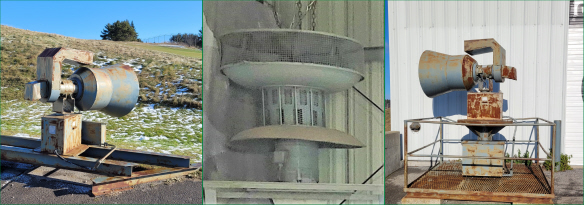
Vision
By showcasing/championing Canada’s preparedness to secure the seat of government during the Cold War, the Diefenbunker creates this country’s most unique learning environment for present and future generations to better understand one of the most critical times in the world’s history.
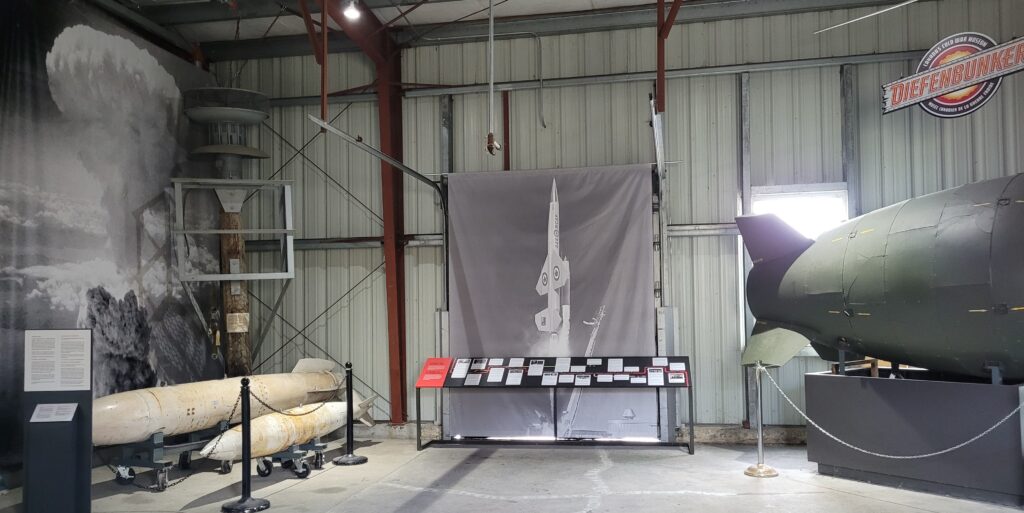
The Diefenbunker, Canada’ Cold War Museum DCCWM Website
The above title hyperlinks to the DCCWM website. Scrolling down to the Virtual Tours Section you will find some excellent 3D-type walk through tours of various locations of interest in the museum. Further down on the page you will find a very short two minute video brief summary of the almost four decades of the Cold War.
Parks Canada’s Commemorative Integrity Statement July 1, 2014 for the Diefenbunker, Canada’s Cold War Museum and a National Historic Site click C.I.S. HERE!.
This CIS document defines the commemorative integrity for the Diefenbunker, Canada’s Cold War Museum. It provides a baseline for planning, managing, operating, reporting, and taking remedial action.
The Diefenbunker’s Display “H-Bomb”on display at the entrance to the blast tunnel.

The BDU-8/B practice nuclear bomb training shape on display in the Butler Hut is on long-term loan from the Canadian War Museum. It is an accurate representation of the actual Mk 43 one megaton thermonuclear (H bomb).
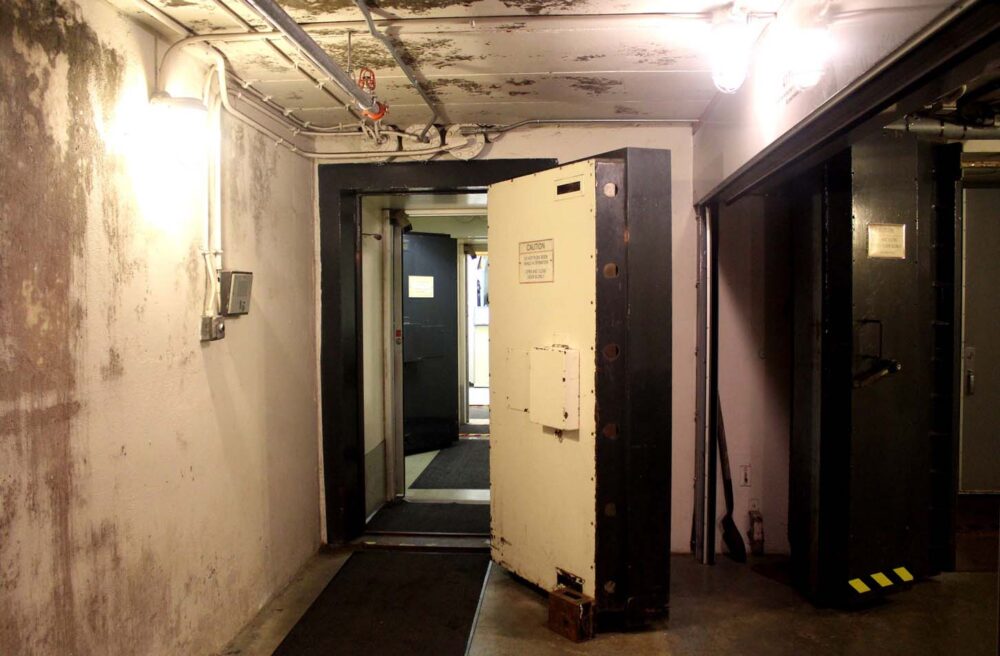
Entrance Doors to the Diefenbunker, Canada’s Cold War Museum. These would have been always kept closed during the Cold War.
To get an idea of the layout of the Diefenbunker check out this link FLOOR PLANS for the Four Levels of the Central Emergency Government Headquarters at Canadian Forces Station Carp, Ontario
…………………………………………………………

THE COLD WAR – A (DRAFT- Never Realized – Script Proposed as a SHORT VIDEO INTRODUCTION to the Cold War and the Diefenbunker Tours by Dave Peters – rev #6, 04 Oct 2002)
Note: The following is a draft of a potential script for a short introductory video intended to introduce visitors to the Diefenbunker Museum. The video was never produced. I still believe that it is necessary to have such an introduction which is common practice in many similar North American museums.
In 1959, families in Canada were being instructed by their governments to store quantities of food in their houses, Canadian school children practised taking cover under their desks, and television stations announced tests of emergency siren signals. Ordinary Canadians were asked to do these quite extraordinary things because there was a serious possibility that their lives and those of their families would be threatened by a massive nuclear attack on North America. The Cold War was at its most intense and potential nuclear devastation was lurking in the wings. I’m George Rich and in the early sixties when the Cold War was in one of its most dangerous phases, I was one of the CBC announcers that produced the attack warning message tapes that would have been broadcast over the Emergency Broadcasting System in the event of an actual attack on Canada.
What is a “Cold War”? Winston Churchill first coined the term in 1949. It refers to a state of hostilities between nations just short of actual combat. The development of huge stores of weapon systems including weapons of mass destruction such as nuclear bombs, the creation of large standing military forces as part of even larger alliances, intense surveillance and spying by the antagonists, sabre rattling and brinkmanship; these were all characteristics of the Cold War.
The Cold War lasted from 1945 to 1989. The Soviet Union had been an uneasy partner of the United States, Britain, Canada and during the Second World War. However toward the end of the war, with the imminent defeat of NAZI Germany, these nation’s interests in the future fate of post war Europe, and soon after the world, began to dramatically diverge. The United States’ President Truman, Britain’s Prime Minister Churchill and the Soviet’s Chairman Stalin agreed to split Europe into eastern and western zones.
What made the Cold War very different from the “Hot” wars that had preceded it was the existence of nuclear weapons and the very real threat that they would be used in future conflicts. These weapons of mass destruction, developed and employed in war for the first time by the United States against the Japanese cities of Hiroshima and Nagasaki, had demonstrated their horrifically devastating effects. Subsequent development of more powerful atomic weapons including hydrogen bombs and warheads along with bombers and later sub-orbital missiles to “deliver” these weapons cast a doomsday shadow across the globe.
On March 5th, 1946 Churchill gave a speech at Fulton College, Missouri where he stated that “_ an iron curtain has descended in Europe”. This iron curtain divided the world into two armed camps, west and east. The “West”, was centred on the United States and its North Atlantic Treaty Organisation (NATO) allies. Canada’s then Foreign Affairs Minister Pearson was highly instrumental in the establishment of NATO, which had been ratified in 1949. NATO was one of the main bulwarks of the West’s defence during the Cold War. The “East” included the Soviet Union and its partners including East Germany, Poland, Czechoslovakia and Yugoslavia formed the Warsaw Pact in 1955. From that point on the lines were drawn on the map of Europe and the east-west confrontation was to threaten the survival of humanity for the next three and a half decades was underway.
As time passed the ideological struggle between communism in the east and democracy in the west grew increasingly tense. It became apparent to the political leaders on both sides and to scientists and analysts as well as to much of the planet’s population, that an all out nuclear attack by either side would have enormous consequences. Civilisation, even the very existence of all life on earth would be threatened by the use of nuclear weapons. There was widespread fear that some international event or situation could at any time trigger the outbreak of a third world war. Many events increased the tension, at times coming very close to the brink of such a war. The Berlin Blockade; conflicts in Korea, Taiwan, Vietnam, Afghanistan; attempted revolutions in Hungary, Poland, East Germany; the construction of the Berlin Wall; “incidents” such as the Cuban Missile Crisis and the U2 spy plane downing and strife in Africa and central America are examples. Other tense situations occurred when bomber and missile warning systems inadvertently gave false indications of attack. As time went on additional nations became nuclear powers further adding to the intensity of the Cold War. The addition of France, and China to the nuclear club further increased the chances that something would go wrong. The world came close to nuclear holocaust and possible annihilation many times during the sixties, seventies and early eighties.
The West and the East each built up huge military forces, which included nuclear attack systems designed to retaliate against each other in the event of a surprise attack. These nuclear forces were well protected by either being dispersed in submarines at sea, by being mobile in disguised rail or truck launchers or by being placed underground in concrete silos. They were poised to be launched against the other side at a moment’s notice. The existence of such retaliation systems was recognition that there was really no truly reliable, complete defence against a nuclear attack. Both sides attempted to devise counter missile systems but without much real success or confidence that they would actually function while under intense attack. Nations on both sides built secret underground, nuclear bomb resistant bunkers for their government’s leaders.
Canada found itself geographically located between the two principle superpowers. Over the north Polar Regions is the shortest distance between the United States and the Soviet Union! The federal government and many Canadians were rightfully concerned that a war between the superpowers would end up destroying Canada.
In response, throughout the cold war period most nations including Canada created programs to provide for some protection for their civilian population. In some countries comprehensive Civil Defence programs were put in place that were adequately designed and equipped to protect all of their citizens. Sweden, Switzerland and to a lessor extent the Soviet Union and their Warsaw Pact allies had fully functional Civil Defence programs. The United States had initially put a great deal of effort into Civil Defence but as the Cold War waxed and waned, less and less of their preparedness to protect civilians remained truly workable. Given the magnitude of the threat, it is remarkable that France, Britain, along with most of Western Europe did very little to protect their civilians.
Canada had rudimentary plans for Civil Defence and in a few aspects had developed a useful capacity to protect some of its citizens in the event of nuclear war. However the federal government was reluctant to spend the money needed and a general lack of interest on behalf of most provinces (and much of the population) to participate meant that not little significant progress was made. The federal government did publish a number of useful booklets designed to help the public take measures to protect itself. They also had installed a nation-wide system of attack warning sirens and developed the CBC radio-based emergency broadcast systems to warn and advise the public in case of attack. Large numbers of hospital equipment and medical supplies were placed in storage and stocks of radiation detection equipment were acquired. In the 60s and 70s, many civil defence workers and the military were trained in their use. The federal government also encouraged families to build fallout shelters in the basements of their homes. Later they identified, but did not equip millions of spaces in the basements of large buildings for use as community fallout shelters. However such plans were largely incomplete and were not adequately implemented nor maintained.
In the sixties the Canadian government had also secretly built a system of strong concrete and steel underground structures to protect thousands of key national officials. The Carp, Ontario bunker and six other smaller for provincial governments across the country bunkers were constructed under a veil of secrecy during the sixties. These were intended to enable the continued functioning of a minimum of legitimate government no matter what happened. Other nations also built similar bunkers for their leaders, some of which were extremely well hardened and buried deep underground. In the case of the United States and the Soviet Union each appears to have constructed hundreds of such bunkers for their leaders and senior officials, some of which are still in use today.
The Diefenbunker in Carp is one of the few such structures remaining in Canada.
The collapse of the Soviet Union was likely caused by many complex factors. Its fall is illustrated by the fall of the Berlin Wall. The result has been the relative democratisation of most of the former Warsaw Pact members and the reunification of Germany which truly signalled the end of the Cold War. This has resulted in the survival of the United States as the world’s sole remaining superpower. Is this the beginning of a “Pax Americana”? Or is it simply the beginning of a new type of cold war where states that possess even a few nuclear weapons are in a position to threaten the world to get their own way. Despite both Russia and the United States having significantly reduced their stocks of nuclear weapons systems, great numbers of such weapons remain not only in those two nations but also around the globe. Whether the lessons of what could be called the first Cold War have been learned by the world remains to be seen.
You are now about to tour a place that was kept secret from Canadians for the first 20 years of its existence. The Diefenbunker has been acquired by a small group of volunteers and is now being operated as a non-profit museum of the Cold War. During your visit we ask you to think about what could have happened to the world, to Canadians and to the families of those who would have had to come to this place to try and maintain a thin line of continuity of government if ever the sirens had sounded signalling the start of a real nuclear attack!
Notes about Misc. Events in the History of the Diefenbunker as a Museum During the early years from1997 to 2006
1. Discovery of facility related document, drawings (and keys) in a locked room in the newly taken-over bunker. 1994-5
2. Visit by Diefenbunker Volunteers to CFB Borden to see and stay in the (then, 1998-9) recently decommissioned, but still building-functional Regional Emergency Government HQ (for Ontario). We were able to do a detailed tour of the building and demo of the generator start-up procedures. Based upon that visit (and a follow up a few years later),(after hearing in the early 2000s that the building was slated for sealing/destruction) we were able to acquire one of the main generators from that facility. While the Torbolton Historical Society subsidized the generator’s transportation to the Diefenbunker, it took us a year or so be able to pay the out-of-pocket costs of Lorne Montgomery (local heavy equipment contractor) to partially disassemble it and reinstall it in the 100 level machine room. http://g.co/maps/nmuj5
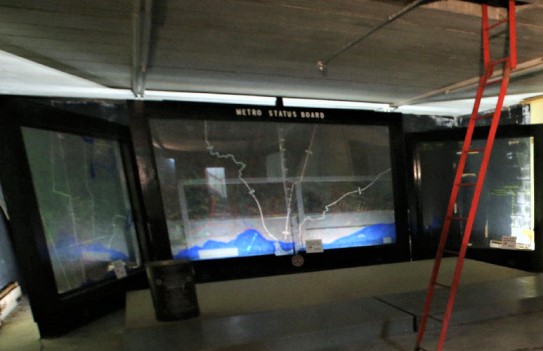
3. Discovery of and visit to the hidden Municipality of Toronto Re-entry operations control centre in the backyard of an old farmhouse in Aurora, ON. This happened on the same trip (above) as the visit to the Borden REGHQ. http://g.co/maps/8u4y7
4. Visiting the Kemptville and Carleton Place CRUs.(1998-2002+) to see what artifacts (Maps, photos, devices, etc.) were there. There were many but in the case of Kemptville the RCMP had taken over the building and they were not disposed to giving us much. We do have pictures in the archives. The building has since been leveled. The Carleton Place building is still in existence and it might have some stuff in the basement (where the fallout shelter for about 125 officials was located. I believe we did get some wall maps from that location.
5. Early Jan 2001 trip by two volunteers to CFB Shilo REGHQ to identify and mark those items of furniture and equipment that could be used in reconstruction the offices and other rooms in the 1961-early 80s. A year or so later we were able to raise the finds to hire a tractor trailer to go out and retrieve the items that DND had kept in storage for us. These acquisitions are the basis for most of the 60s to early 80s furniture and some of the equipment that now ‘dresses’ the bunker re-creations.
4. Acquisition of Public Works Canada Civil Defence/Emergency Preparedness files including the plans for community fallout shelters, etc.
5. Finding the abandoned construction site of what was to be a second bunker site. http://g.co/maps/cf4hd
6. Finding and getting our hands on the items rescued by the Cdn War Museum from the bunker before it was to be closed and sealed by DND (as the Richardson facility at Perth had been shortly before). The War Museum still has some items that we are trying to get our hands on on a long term loan basis (radsniffer, EmGovSitCen Alerts Status Board, NORAD NUDET Base Map, teletypes, etc.).
7. The closure of the Canadian Emergency Preparedness Collage in Arnprior and the reacquisition and reinstalling of bunker EmGovSitCen furniture and audio-visual operations briefing equipment back in the bunker.
We failed to get our hands on the sample fallout shelters they had buried on the property – some were destroyed, some were ‘given’ to locals to use for other purposes.
8. Reacquiring and reinstalling the CBC Control Room from the War Museum.
9. Finding the drawings for and the reconstruction/re-equiping of the Federal Warning Centre Display, Plotting and Signal Rooms 2006-2011.
10. The search for FWC Iconorama related information and equipment
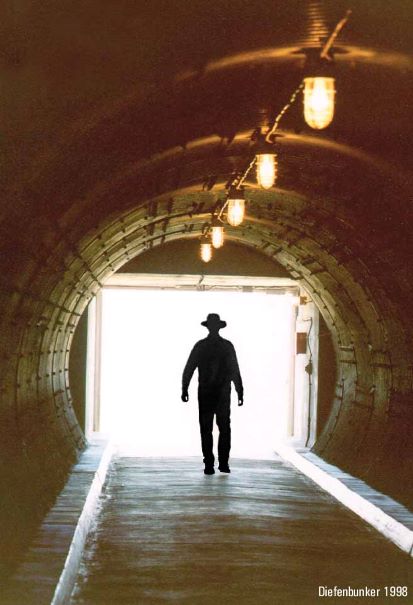
11. The story behind the demolition of the REGHQ site in Penhold Alberta. For photos of the demolition of this facility visit http://www.pinetreeline.org/photos/p31-01.html This site pictorially documents the destruction of the REGHQ at Penhold AB. It was one of six such fallout shelters located across Canada and part of a system of bunkers that included the blast and fallout protected Diefenbunker. The REGHQs were intended to be used by federal and provincial officials in the event of nuclear attack on North America. The Penhold bunker was completed in 1964. The bunker was 77,000 square feet and there was also a smaller bunker (17,000 square feet) south of the base which is also being demolished. As well as being the location from which Survival Operations/ Re-entry into target areas would have been coordinated the regional bunkers also served as Provincial Warning Centres and as military communications centres. This site has great photos (6 to 13; 15 to 50; 52 to 82) and a copy of a newspaper article on the demolition (83). This is the only such bunker that has been destroyed; most of the other REGHQs have been simply sealed.
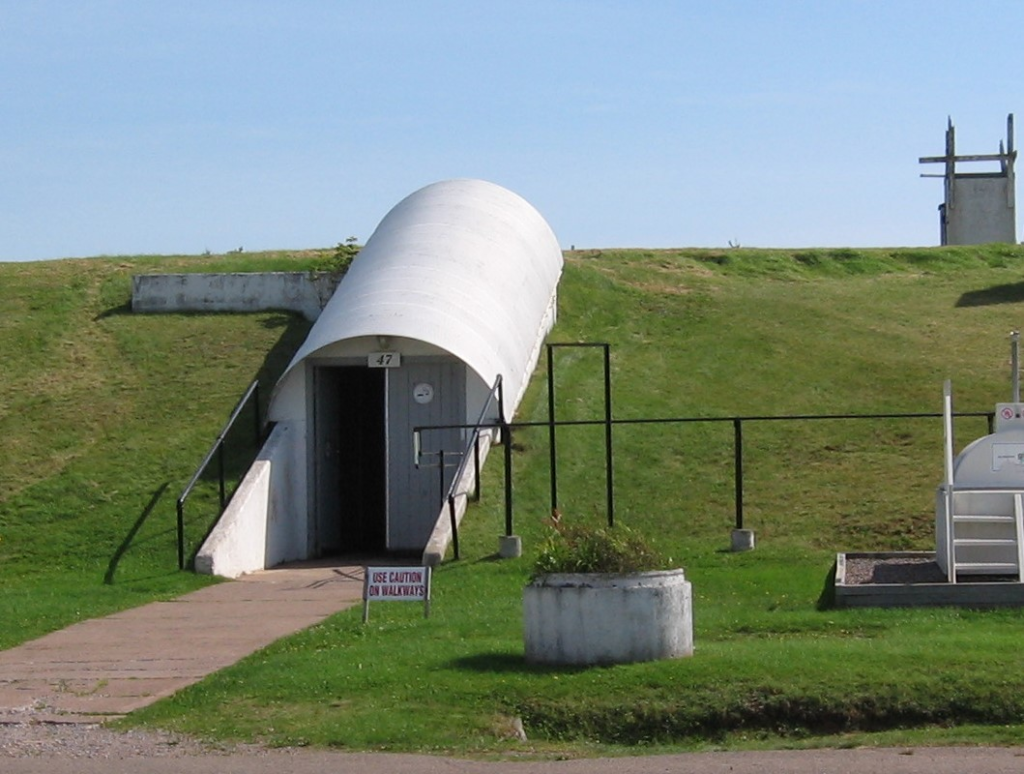
12. The failure to save the REQHQ site in Debert NS as an historical site/museum (it has been converted into a datastorage site “Dataville” under private management – very uncooperative with our efforts to save it or even acquire any of the valuable equipment/artifacts it contained). This bunker is now part of the Colchester (Industrial) Park -the former CFB DEBERT – which is located 4 kms north of Exit 13 on Nova Scotia’s Highway 104. This bunker was in excellent condition, virtually unchanged (with the exception of some missing furniture and equipment) from its operational days in the 60s, 70s and 80s. For a period of time up until a few years ago it was open for tours a few weekends every year. This bunker was in the best shape of any such facility in Canada (and in the authors view is worthy on being declared a national historic site as a natural complement to the Diefenbunker and the role it played in Canada’s Cold War history). A Parks Canada employee did manage to get some artifacts out of the Debert REGHQ in the late 90s.
13. A bunch of Bunker Troglodytes visited BFC Valcartier early 2000s. Had a good tour but no response to info exchange cooperation of for any of the remaining stuff as artifacts. In any case the place had been extensively gutted and reconfigured for Y2K preparations. Came back in a blinding snow storm! http://g.co/maps/pvqbu
14. Vote at West Carleton Townshop to continue to try and sell the bunker but to allow the “Diefenbunker Development Corporation to buy it for $3. 1997-8

15. Visit by Sergie Ivanoff Russian Minister of Defence (ca 2004) with four Russian Army generals and two navel commanders shepherded by two RCMP officers. They seemed to enjoy their visit and showed a great deal of interest in an exhibit we had on display at the time on Cold War Toys (on both sides of the iron curtain). Ivanov indicated interest in helping us with a Russian Civil Defense exhibit – and on the spot appeared to assign one of the naval commanders to look after it – unfortunately nothing came of it. It would have made a great exhibit because the Soviets were highly invested in civil defence for their people.
Past and Continuing Exhibits and Functional Re-Creations at the Diefenbunker
Webmaster Note: This History of Past and Continuing Exhibits and Functional Re-Creations was compiled by Doug Beaton, a long-time volunteer and the person primarily responsible for the build up and cataloging of virtually all of the Diefenbunker’s Collection of Archives and Artifacts as well as the acquisition and display of its current library of over 6000 volumes and pamphlets. Click on the headline above to see the document.
